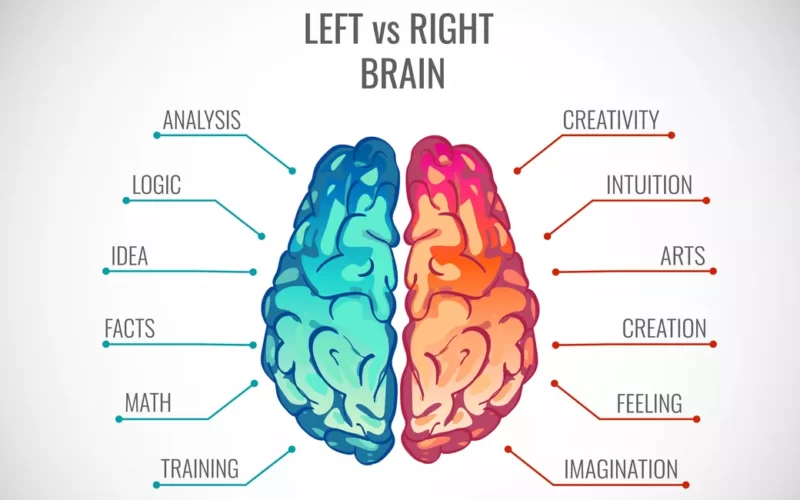
There’s always a divide in this world. It may not always be even, but it is there. For example, people are either right-handed or left-handed, and which one comes down to genetics. You may or may not be surprised to learn that around 90 percent of people in the world are right-handed, but to this very day no one knows why genetic evolution favoured righties over lefties.
Even if you are predominantly right or left-handed there are certain tasks you can do to overcome this ‘handedness’. Tennis or golf players, for example, can train to become successful hitting on their ‘un-natural’ side. And now, according to new research, the idea of people being either right or left-brained may also be less rigid than we first thought.
Going by conventional wisdom, people tend to have either a right or a left-brained thinking style, personality, or way of doing things. Generally those who are right-brained tend to be more creative and rely more heavily upon intuition. These people are usually big-picture thinkers who view the world in a subjective way. Left-brained people on the other hand tend to be more analytical, quantitative, and logical. Although this right and left-brained idea has become widespread and accepted over time, is it really correct?
Previous research has told us that certain brain functions are linked to one side more than the other. This can be seen in part in stroke victims. Language is linked to the left side of the brain, and some areas of the right brain controls movement of the left arm and leg (and vice versa). We know that damage to the front of the brain can impair creativity, planning skills, and motivation, while damage to the rear of the brain can cause blindness. So, it’s fairly obvious that location is important.
However, when it comes to individual personality traits, there’s very little evidence to suggest any real link to either side of the brain. If you were to perform an MRI or CT scan on both an artist and a mathematician and compare the results, chances are you probably wouldn’t even be able to tell the difference as they would be that similar. So, where does that leave us in the argument for right and left-brained thinking? Is it reality or simply a myth?
Unfortunately as of yet, there’s not been enough research carried out to confirm it, but the evidence is starting to stack up against the idea. A study carried out in 2013 by researchers at the University of Utah concluded that regardless of someone’s personality traits, brain scans show similar activity on both sides of the brain. The study involved comparing the scans of more than 1,000 participants aged between 7 and 29. The results of the study were that no evidence of “sidedness” was discovered and that people being more right or left-brained is more of a saying than the truth.
So, until evidence suggests otherwise, it appears that our brains don’t really link our personality traits to one side or the other. We may still not know exactly what determines our individual personality traits, but what we do know is that it’s highly unlikely to be down to a dominating side of the brain.





